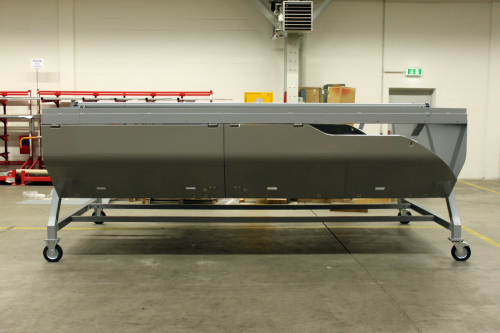
Working with partners including Bombardier GmbH, KraussMaffei Kunststofftechnik GmbH and Bayer MaterialScience AG, researchers at the ICT in Pfinztal, Germany, developed the sandwich material consisting of glass fibre reinforced polyurethane outer layers around a core made of paper honeycomb.
To demonstrate the material, the ICT manufactured a train component that is subject to significant stresses and which has to fulfill a number of requirements – the housing for a diesel engine, approximately 4.5 m long and more than 2 m wide.
According to Jan Kuppinger, a scientist at the ICT, using this polyurethane material, it was possible to reduce the housing’s weight by over 35% compared to steel and aluminium versions, and cut costs by 30%.
Diesel engine housing
The housing is located beneath the passenger compartment, between the car and the tracks. It shields the engine against flying stones and protects the environment from any oil that might escape from the engine. In the event of a fire, it stops flames from spreading.
The researchers incorporated various additives into the polyurethane to ensure it would meet fire safety standards. Then, the project partners optimised the manufacturing process – fibre spraying – by developing a mixing chamber which allows more complex structures to be produced in any size.
“This is the first time it has proved possible to use this process to manufacture such a large and complex component that also satisfies the structural requirements,” says Kuppinger.
PURtrain project
The diesel engine housing demonstrator was produced as part of the PURtrain project, which is funded by the German Federal Ministry of Education and Research (BMBF).
The demonstrator has passed its first strength test – in which it was placed it in a test rig and forces applied to it at various locations, measuring the extent to which it deformed.
Next, the researchers want to trial the component in a proper field test. If that proves successful, it may then be possible to use the material to make roof segments, side flaps and wind deflectors for the automobile and commercial vehicle industry, and to ramp up the manufacturing process to produce medium volumes of between 250-30 000 units.




